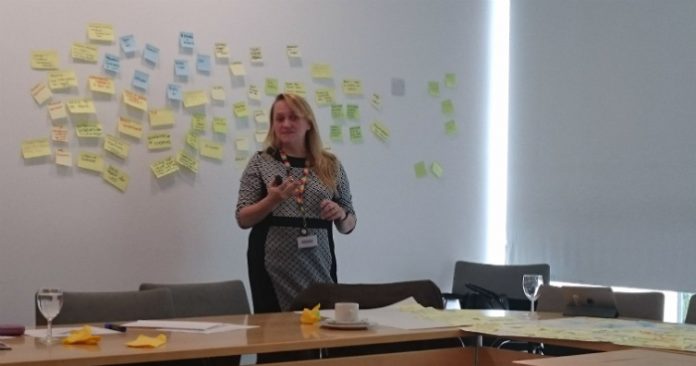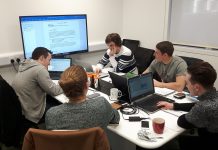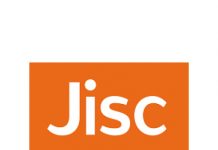At the University of Winchester, academics are working with professional services to improve the student and staff experience. Dr Tammi Sinha, one of the academics in the HE continuous improvement unit, describes the benefits of lean approaches from the perspective of an educator.
How many times have you seen the phrase, “we live in interesting times”? As an academic and a member of a continuous improvement unit at a university, we are indeed in interesting times.
The challenges are many: students have rising expectations of the environment and teaching that they are paying for. The relationships between students and educators are strategic partnerships, and should not become transactional. As an educator, I want to share my discipline and expertise with my students, I want quality time and interactions with them – I don’t want to be living on adrenaline with high stress levels and wondering if we will become victims of too many surveys and performance measures that drive inappropriate behaviours.
So in this time of seismic changes, we need to keep a cool head and apply the wonderful tools that we have at our disposal to make higher education the best that it can be for our many stakeholders.
Core ideas
Lean as a philosophy is a powerful enabler to help us to do that. I am talking about lean’s core ideas of respect for people, continuous improvement and the eradication of waste, not fake lean as described by Bob Emiliani. More about that later.
We are measured on many things, the national student survey has significant implications for universities and colleagues. It has a direct impact on league tables, but in my view has issues – one being the fact we are asking feedback from students who may not have the experience of other universities to enable comparisons.
As a lean practitioner I am always asking why, why, why, why, why? How can we use this data to bring bring meaningful and helpful improvements?
Many universities are using the idea of the student journey and mapping this journey using value stream mapping tools, many focusing on service blueprinting. This is a fantastic leap forward. Service blueprinting enables us to look at the student journey in terms of student touch points – when and how do they interact with university colleagues – how are colleagues front-of-house interacting with students, how are they supported backstage by professional services and academic services, and then how do our systems support students, both front of house and behind the scenes.
Service blueprinting
Lean also helps us here. We need to identify what our key beneficiaries value. They include: students, colleagues – both academic and professional services, parents, funding bodies, HEFCE, local communities, international communities, the list goes on…. we then need to understand / map how this value flows. Service blueprinting can help us with that.
We can then identify what is value added, business value added – ie activities that need to occur to keep the organisation going but that beneficiaries are not prepared to pay for – and non value added activities We need to enable the flow of value added and business value added activities, by removing bottlenecks and unnecessary steps. These non value added activities are waste, and should be prioritised for removal. We then strive for perfection.
This is where we need to take a step back and survey our landscape. I believe in building the beauty, working in higher education is a privilege as we are able to develop our students into free thinkers, people who can question the status quo, who can apply critical and creative thinking to situations, and are hopefully up to the task for transforming our economic, political and environmental landscape for the better.
‘Fake’ lean
Coming back to the idea of ‘fake’ lean: many organisations see lean and think, great we can save money, cut jobs, cut back on services. This is missing the point. Focus on people, look after them, create environments where creative disruptive innovation in processes and services is welcomed. Focus on operational and service excellence, savings will follow.
So what can we take from lean and operational excellence which can enable us to make HE the best it can be?
We can go to the Gemba (go see!) we can put ourselves in other roles’ shoes, and experience the front line from different perspectives. We can seek to understand the different perspectives of our beneficiaries and what they value. We can understand how to make this value flow, and we can remove waste wherever we find it.
Another tool in the our repertoire includes the 5S (see below). This can be used in the physical or virtual environment. Give it a go
You walk into your environment whether it is an office, teaching room or your emails. You survey the space and identify items that are not needed, broken, in the wrong place (you can red tag these). This is the SORT phase. You then SET IN ORDER. Anything that has been tagged you see if it needs to be removed, fixed or deleted.
In a shared environment ensure team members have a say! You then periodically SHINE the area, go to the gemba and see if the environment has bounced back to the disorganised state. You then STANDARDISE ie apply the 5S in other areas. Then you SUSTAIN that activity, but diarising the activity, weekly, monthly – whatever works for you.
To conclude, if we want to accept the challenge and make HE the best it can be, we need courage. Courage to challenge, courage to lead as lean practitioners, courage to ask difficult questions, and courage to build the beauty.
Bon courage!








